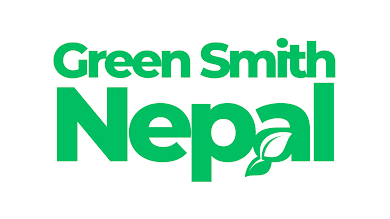What Is Extended Producer Responsibility (EPR)?
Extended Producer Responsibility (EPR) is a policy approach that makes manufacturers, importers, and brand owners responsible for the end-of-life management of the products they introduce to the market. The goal is to reduce waste, encourage recycling, and promote sustainable product design by shifting the burden of waste management from local governments and taxpayers to the producers themselves379.
Why Is EPR Needed in Nepal?
Nepal faces mounting waste management challenges, particularly with the rapid increase in packaging waste, electronic waste, and single-use plastics. The current system relies heavily on informal waste pickers and municipal services, which are often underfunded and overwhelmed. EPR offers a proven solution: by making producers accountable, it incentivizes them to design products that are easier to recycle, reuse, or dispose of safely45.
How Could EPR Work in Nepal?
In Nepal’s context, importers play a significant role as “producers,” since much of the packaged goods and electronics are imported. An effective EPR framework would require importers to:
- Register and report: Producers and importers would register with authorities and report the types and quantities of products they place on the market.
- Collect and manage waste: They would be responsible for collecting a certain amount of post-consumer waste, either directly or through third-party organizations.
- Recycle or dispose of waste: Collected waste would be recycled, treated, or disposed of in an environmentally sound manner.
- Finance the system: Producers would pay fees or contribute to a fund that supports waste collection, recycling, and public awareness campaigns47.
Challenges in Implementing EPR in Nepal
Despite its benefits, implementing EPR in Nepal presents several challenges:
- Enforcement: Monitoring compliance and ensuring that all producers participate is difficult, especially given the large number of small importers and informal businesses45.
- Tracking and Free-Riders: Tracking the flow of products and waste is complex, and there is a risk of free-riders—companies that avoid their responsibilities.
- Funding Mechanisms: Establishing a sustainable funding model is critical. Fees must be set at a level that covers costs but does not discourage business49.
- Local Adaptation: EPR models from developed countries may not fit Nepal’s context. Local realities, such as the role of the informal sector and limited infrastructure, must be considered49.
Learning from South Asia and Beyond
Countries like India, Indonesia, and Vietnam have already implemented EPR schemes, with varying degrees of success. These experiences highlight the importance of strong regulatory frameworks, clear definitions, and stakeholder engagement. For example, India’s EPR rules for plastic packaging require producers to ensure a certain percentage of their products are recycled, while Vietnam’s regulations have evolved to address enforcement challenges357.
Green Smith Nepal’s Call for a Strong EPR Framework
Green Smith Nepal Organization advocates for the development and implementation of a robust EPR framework in Nepal. This includes:
- Policy Development: Working with government and industry to draft clear EPR regulations.
- Stakeholder Engagement: Involving producers, importers, recyclers, and the informal sector in the design and implementation process.
- Capacity Building: Supporting training and infrastructure development to ensure effective waste collection and recycling.
- Public Awareness: Educating consumers about their role in waste segregation and recycling.
Conclusion
EPR is a critical tool for addressing Nepal’s growing waste crisis. By making producers responsible for their products’ end-of-life, EPR can drive innovation, reduce environmental harm, and create new opportunities in the recycling sector. However, its success depends on strong enforcement, sustainable funding, and adaptation to local realities. Green Smith Nepal calls on all stakeholders to support the development of a strong and effective EPR framework for a cleaner, greener Nepal479.
Citations:
https://www.circularityconcepts.org/module-1-extended-producer-responsibility
https://www.sourcegreen.co/regulation/a-comprehensive-guide-to-epr-laws-for-packaging-in-asia/
https://www.nepjol.info/index.php/TUJ/article/view/72999/55795
https://www.hocalwire.com/blog/how-to-write-news-article-seo-best-practices-1316721
https://www.usasean.org/article/aseans-extended-producer-responsibility-epr-push
https://landbell-group.com/news/how-to-implement-epr-for-plastic-packaging-in-asean/
https://www.syntacticsinc.com/news-articles-cat/seo-for-news-sites-tips-best-practices/





0 Comments